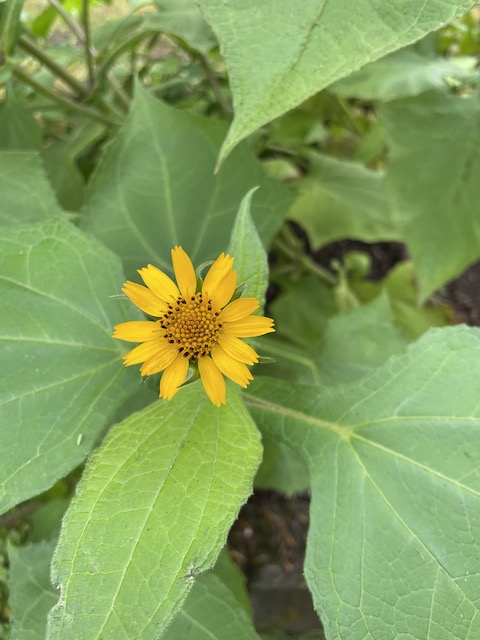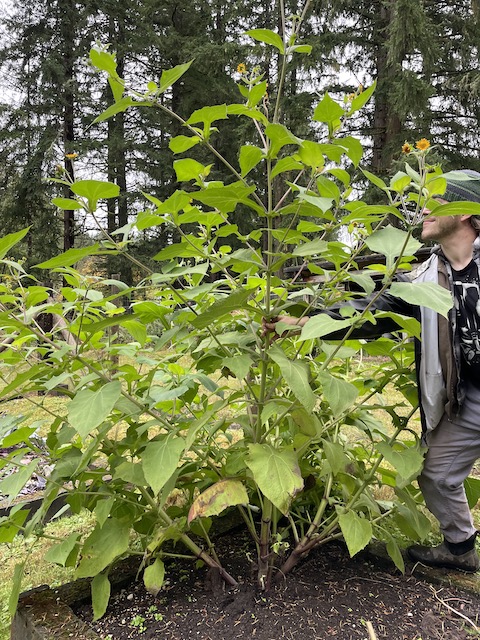Last autumn my friend Evan moved from Castle Rock, WA to the Portland metropolitan area. Most of the moving took place while I was still away in the Carolinas, but I made sure to have at least a day or two set aside to help transport whatever they needed, and to help wrap up garden tasks. On the last day helping there, the last task was to dig up some yacón, a crop I’d only heard about, and one which I was eager to learn more about. Since I finally ate some this week, it seemed like a good time to mention the delicious New World tuberous treat.
Evan wrote about the crop before, and I encourage you to read the whole post of theirs since it’s loaded with additional information as well as growing notes for the other crops they trialed a few years ago. Since I’ve only just tasted this, I don’t know yet how to grow it but we did harvest this one huge plant and boy did it NOT disappoint!

When we dug the plant up, I asked questions but didn’t retain the information since it was a long and cold day. What I remember though was that one plant ended up producing a lot of tubers and that it sounded like it wasn’t very difficult to grow. My hope is that the tubers I kept to grow at my community garden plot will sprout well and I can continue to keep this one around.
What I learned during a followup with Evan this weekend was that the original start was most likely purchased at the garden show in Seattle a few years ago from the Raintree Nursery booth.
Since then Evan kept it going and now hopefully Tamara at Chickadee Gardens and I can keep these going. (We passed on most of the propagative tubers to her, but she and I both got some so no pressure.)
In the post that Evan wrote above, the nursery Cultivariable is mentioned, and I will add that this is not just a resource for edible tubers you can grow, but it’s also a fun site just to sit and read the content. From potatoes to yacón, oca to mashua, ulluco to sunchokes, this is the resource! If you’re looking for potato species to grow for ornamental purposes (since most don’t taste great), again, this is the place! Or if you want to grow the potato (Solanum jamesii) native to the American SW, again, this is where you can find it. (Though the grower makes it clear that this is not a reliable food crop.) Luckily they sell many other interesting ones you can try—but as in vitro platelets it seems, so dare to be different! Why not!?!
While I wish that I could give you some amazing photos of a dish I made with these big beauties, I must confess to only having eaten one of the smaller ones fresh today. After we harvested everything, the propagation bits had to be separated and then we had to store the edible tubers so as to increase their tastiness. Well, even with a diminished capacity to taste and smell right now, I very much enjoyed the sweetness of the tuber I ate raw this afternoon.
Additionally, due to being in COVID-19 isolation, I can’t go to the store. Yes, that’s right, we’ve finally been hit with the modern plague here at home and I cannot yet go to the store again.
So, what did it taste like? It was delicious! Will I eat them again? Absolutely!
Once I’ve chosen three recipes, I’ll add them here in a post. I plan to make a few different dishes to see how different preparations change the taste and flavor. (If you have a favorite, let me know in the comments!)
So until then, stay warm out there and dream about the tasty tubby tubers you can grow in your garden this year!








